Villaricos Coastal Mine Workings Walk looking at mine workings from the 19th century, abandoned smelters and factory ruins
By Nick Nutter | Updated 5 Mar 2022 | Almería | Walking |
Login to add to YOUR Favourites or Read Later
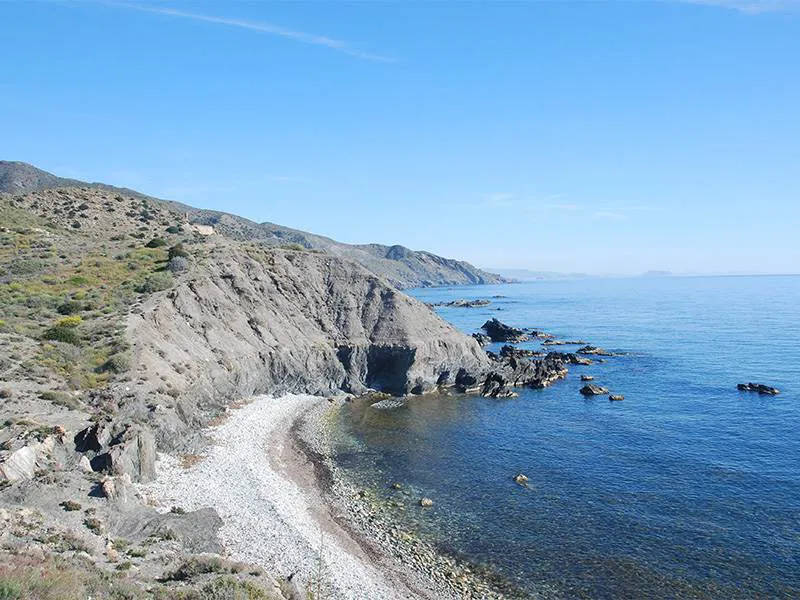
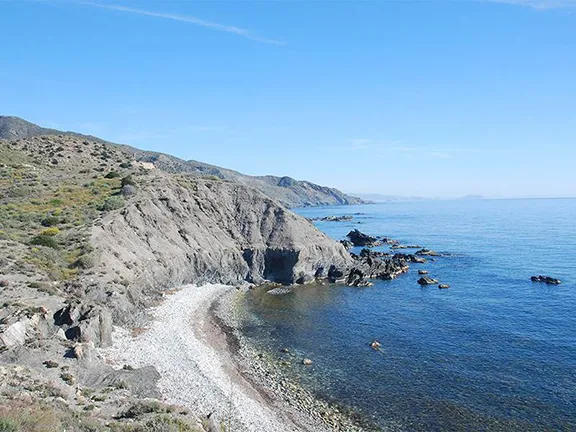
Rugged coast near Villaricos. Esperanza II in background
Once we are all out of lockdown we will have to look at different ways to get out and about in safety. Walking, fresh air, appreciating the beauty of nature is a good way to start. It also supports the Junta de Andalucia initiative, 'Tourism within the region'. Here is a walk along part of the stunning Almeria coast, with a bit of history thrown in for good measure, one for the bucket list.
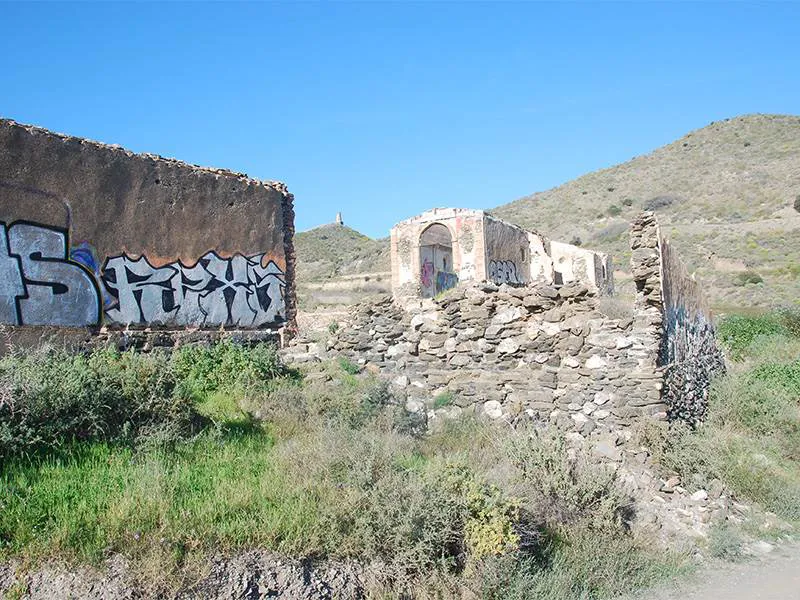
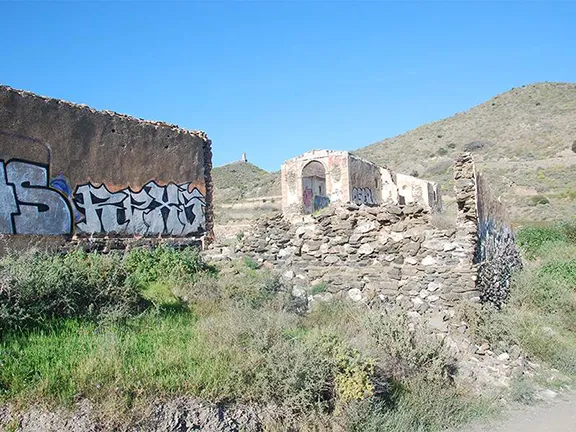
Invencible and chapel
The coast of Almeria from Villaricos almost to the border with Murcia is a rugged landscape where the flanks of the south west to north east running Sierra Almagrera meet the Mediterranean Sea. The Sierra Almagrera is rich in mineral deposits, particularly lead and silver as well as iron, copper and zinc. During the 19th century, the mines were heavily exploited, often by foreign companies and the ore was carried to the coast where it was smelted before being loaded on to ships. The ruins of these smelters line the coast. This walk starts at one such installation and takes you past a couple more. Where possible we have looked at the history behind these stark ruins. The route itself is 2.5 kilometres long so 5 kilometres there and back.
The walk starts at a bay called Invencible[sic] Cove, just a couple of kilometres northeast of Villaricos. Just before the right hand turn into a car parking area, you will see the ruined arches of, it is thought, a narrow-gauge railway line that transported the ore to the coast from inland, for the first smelter on the walk, Invencible.
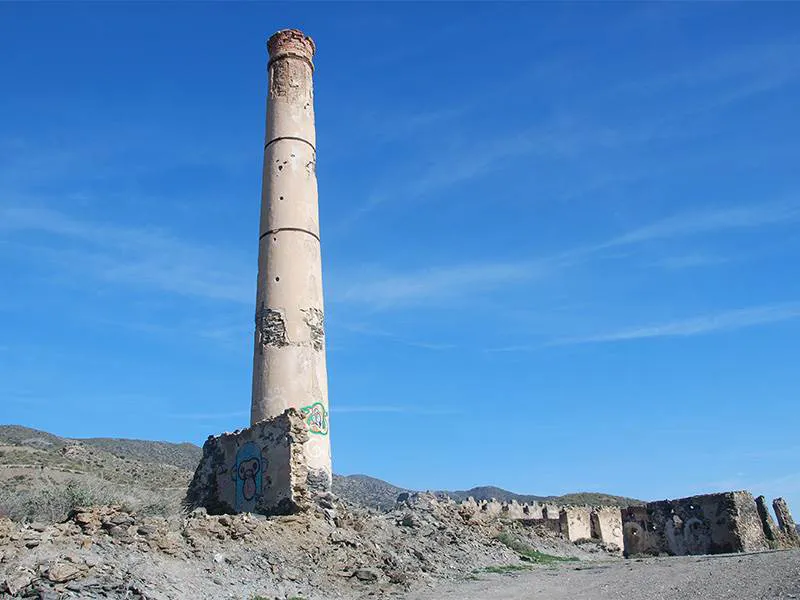
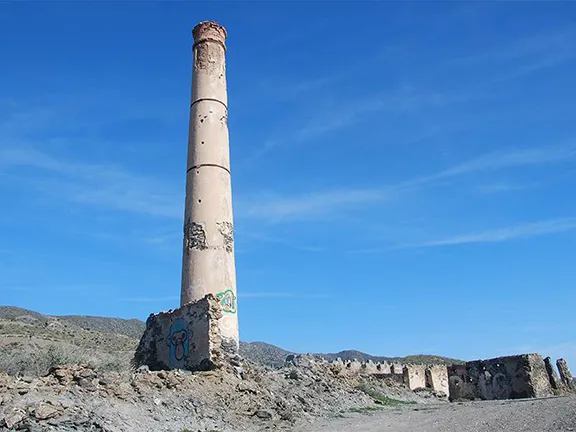
Esperanza II
Just inland from Invencible Cove are the ruins of a factory called ‘Fundacion Invencible’. It was built sometime after 1848. At the time, record keeping was not a high priority with the mining companies, so no further details are known beyond the fact that the installation does not appear on a list of factories compiled in that year. The arched building was a chapel for the workers. A flue took the poisonous fumes from the smelter, up the hill to a chimney.
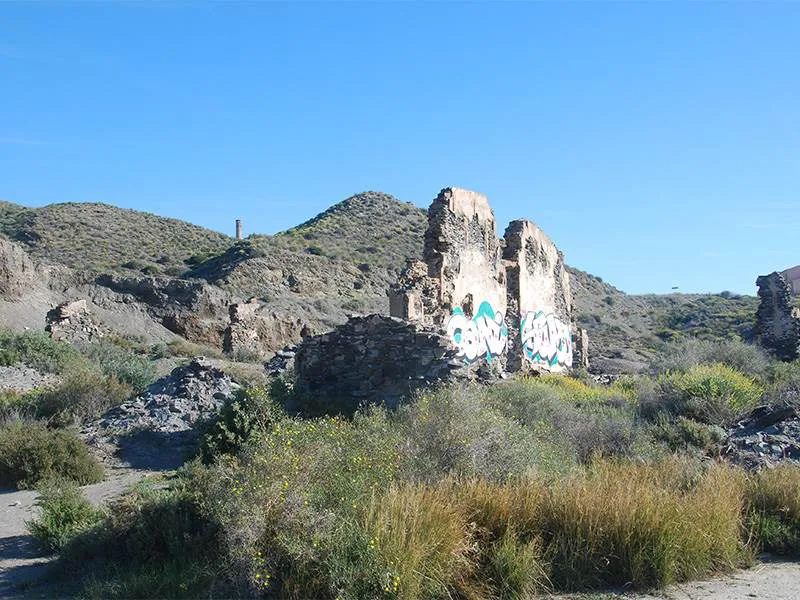
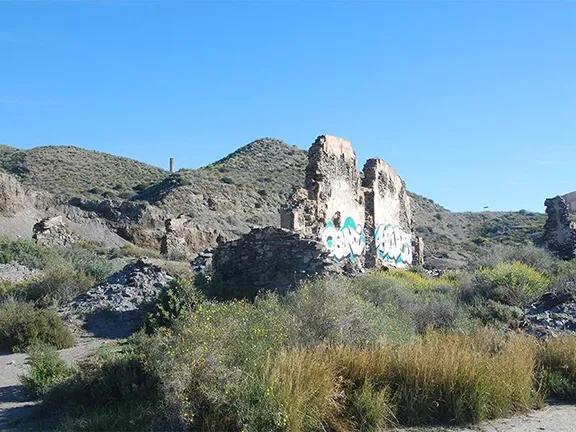
Barracks
Follow the well-defined track northeast. Inland you will see a building that was the barracks for the workers. You soon arrive at the second factory of which a little more is known. The fishermen call this the ‘New Factory’, which probably means it was built sometime after Invencible. Its proper name is ’Esperanza II’. The installation was owned by Pedro Soler, a mine owner who had cashed in on the silver-rich Jarosite discovery in 1852 in the nearby Barranco Jarosa. The chimney on the coast is on the site of the smelter. More flues lead to another chimney on the hill behind the factory. Observe the brick arched flume that led into the sea.
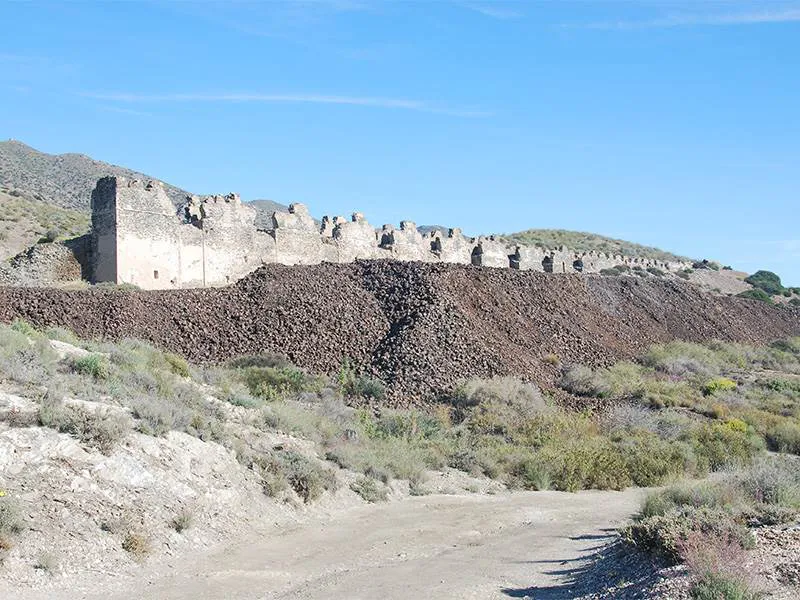
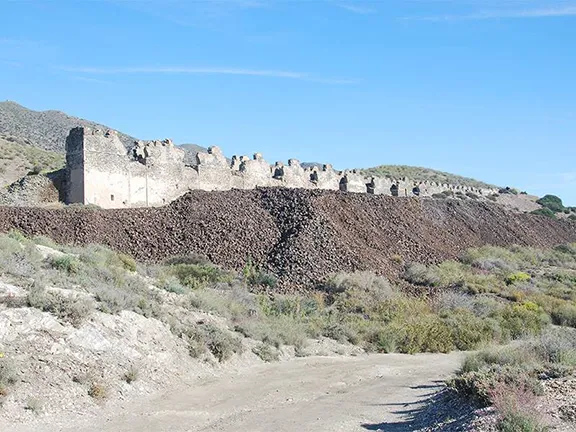
Slag heap
Continue along the track. To your left is a ruined thick wall. Below is a long heap of slag, the waste product from the smelters. It is likely that the wall is actually the foundation for a narrow gauge rail track that would have carried the slag from the smelter to the slag heap. Unfortunately there is no record of this construction so we do not know whether it was steam operated or man power. There is no sign of a steam engine or engine house so I suspect the latter.
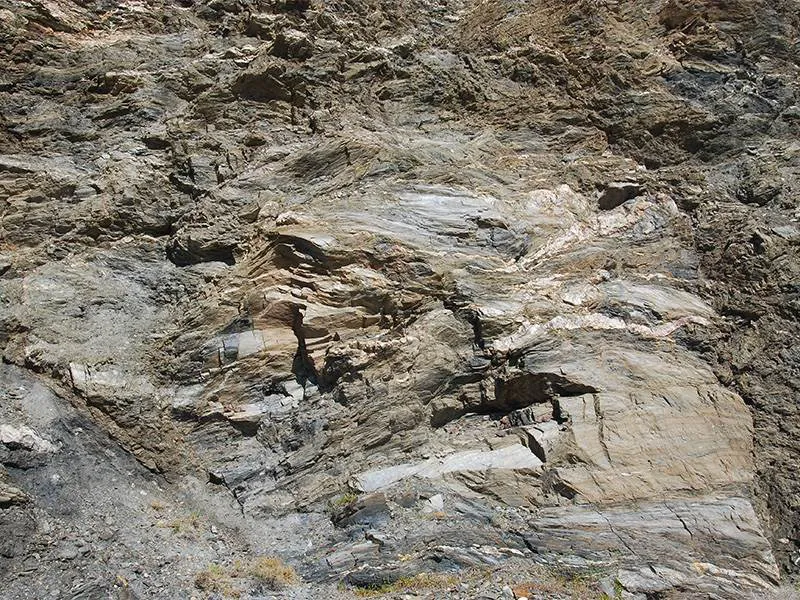
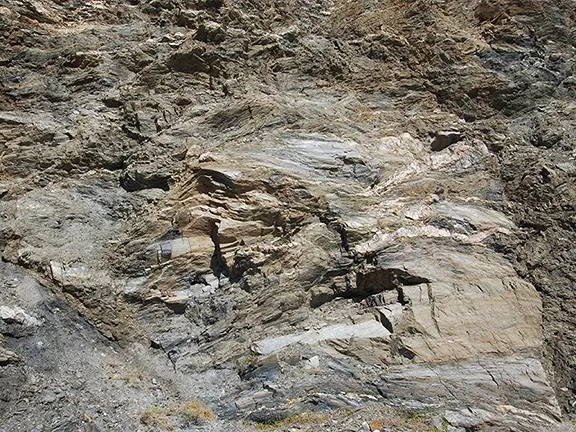
Micaseous schist, folded, with quartzite veins
Just a little further, on the left are the ruins of an ore loading area where the ore from the mines was gathered from inland before starting its journey to the smelters.
The walk finishes in the next bay. On the far cliff you will see a good example of the folded micaceous schist, with mica shining in the sunlight with quartz veins. It is in these quartz veins that the metallic minerals are found.
For more information about Mining in the Sierra Almagrera and Las Herrerias